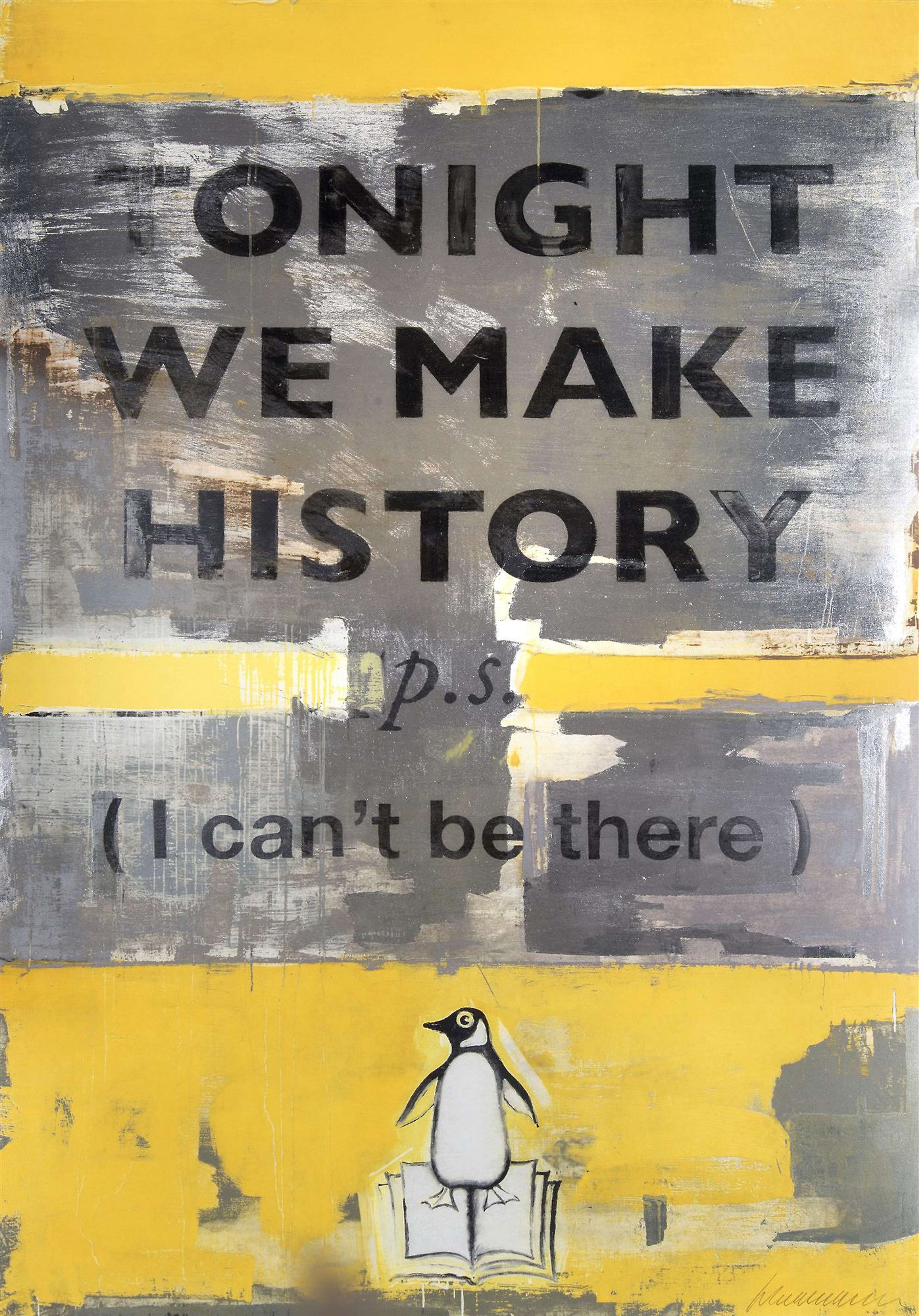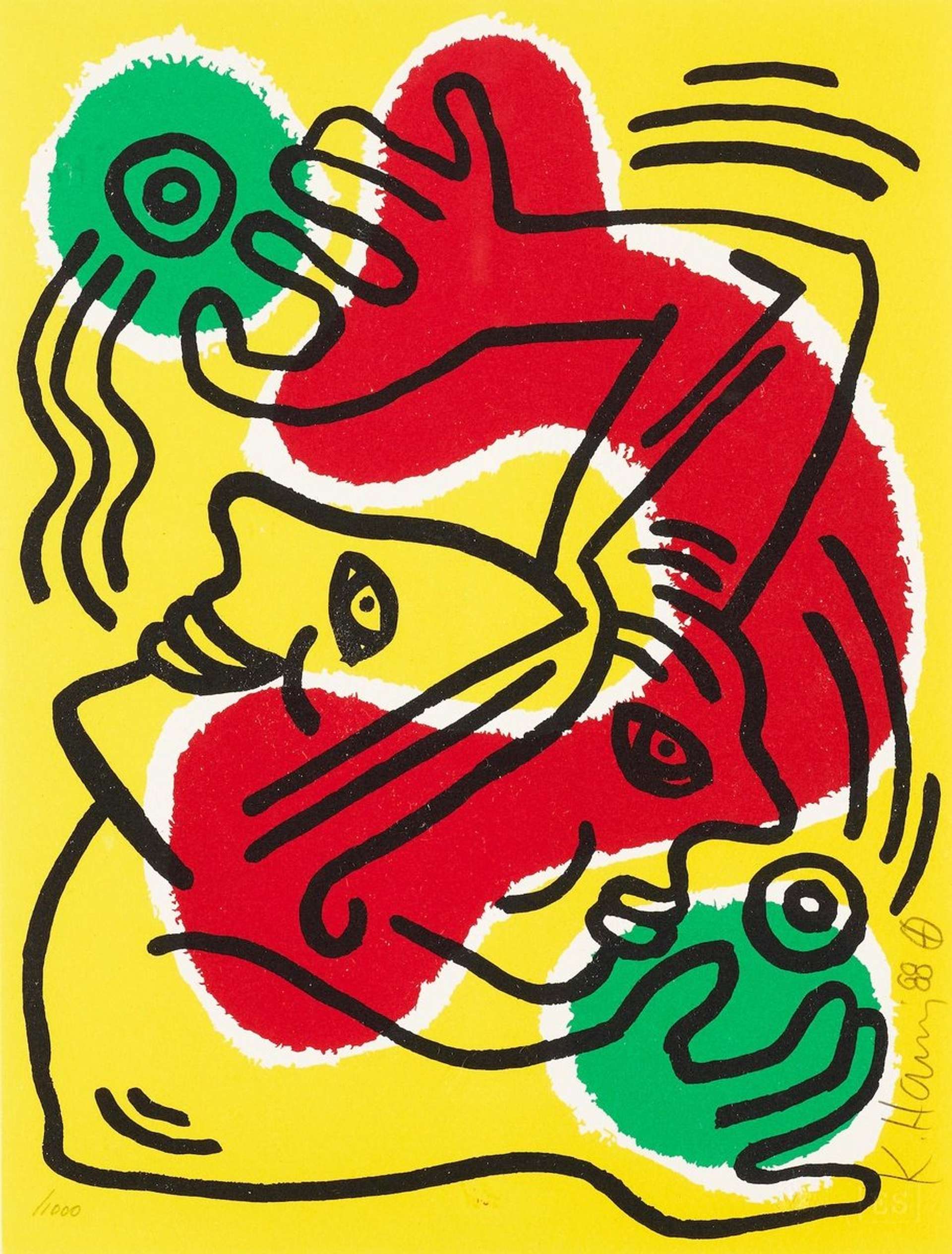 Dollar Sign 9 (F. & S. II.285)
Dollar Sign 9 (F. & S. II.285)Market Reports
Phillips, founded in 1796, is an auction house specialising in contemporary art, design, and luxury collectibles. Over the years, it has expanded its focus beyond traditional auctions to incorporate digital platforms and high-profile sales. With an emphasis on both emerging and established artists, Phillips operates on a global scale, adapting to changes in the art market and auction industry.
The Early Days
Phillips was established in 1796 by Harry Phillips, a former clerk at Christie’s in London. At a time when the auction industry was dominated by a few established firms, Phillips sought to carve out a niche by offering a more personalised and client-focused approach. Initially, the auction house specialised in books, estate sales, and classic art collections, catering primarily to aristocratic and high-society clients. Phillips quickly built a reputation for handling significant and high-profile sales. Among its most notable early auctions were paintings and valuables from the estate of Queen Marie Antoinette, as well as household furnishings and possessions once owned by Napoleon Bonaparte. These sales cemented Phillips’ reputation as a trusted auctioneer for European royalty and elite collectors.
One of the most remarkable moments in its early history was Phillips' unique distinction as the only auction house ever to conduct a sale within the walls of Buckingham Palace. This exclusive event underscored the firm’s prominence in London’s auction scene and further elevated its status among collectors of fine art and antiquities.
Early Auctions
Unlike many of its competitors, Phillips placed a strong emphasis on creating an engaging and theatrical experience for its clients. The auction house became known for hosting elaborate evening receptions before major sales, allowing collectors and buyers to preview items in a more social and immersive setting. This strategy helped foster a sense of exclusivity and anticipation around Phillips’ auctions and this approach later became a standard practice across the industry.
Phillips in the 20th Century
Early Ventures into Modern and Contemporary Art
By the mid-20th century, Phillips recognised the increasing interest in modern and contemporary art, a shift that was beginning to redefine the auction industry. As artistic movements evolved and the market for 20th-century works expanded, the auction house sought to position itself at the forefront of this transformation. While still maintaining its longstanding reputation for handling traditional art sales, including Old Masters, Impressionist works, and fine antiques, Phillips began actively incorporating modern and contemporary artists into its auctions.
This transition was driven by a growing demand from collectors and investors who were looking beyond classical artworks to embrace the avant-garde and experimental styles of the time. As movements such as Abstract Expressionism, Surrealism, and Pop Art gained traction, Phillips recognised an opportunity to diversify its offerings and appeal to a new generation of buyers. The auction house began featuring works by influential artists of the early and mid-20th century, including Pablo Picasso, Henri Matisse, and Joan Miró, alongside established classical pieces.
To further establish itself in the evolving art market, Phillips also expanded its expertise in contemporary artists emerging in the post-war period. The auction house curated sales featuring works from figures such as Francis Bacon, Mark Rothko, and Andy Warhol. By showcasing these works, Phillips laid the groundwork for what would become one of its key areas of specialisation in the 21st century.
By the latter half of the century, Phillips had cemented its reputation as an auction house willing to innovate and adapt to changing market dynamics. This foresight positioned the company to become a major player in contemporary art auctions in the decades to come, bridging the gap between traditional collecting and the emerging interest in modern and postmodern artistic movements.
A New Era
Phillips de Pury & Company
In 1999, Bernard Arnault of LVMH acquired Phillips and merged it with private art dealers Simon de Pury and Daniela Luxembourg. The rebranded Phillips de Pury & Company placed a strong emphasis on contemporary art, design, and photography. Under de Pury’s leadership, the auction house refined its niche, appealing to collectors seeking cutting-edge works.
Phillips in the 21st Century
The 21st century has been a period of significant expansion and achievement for Phillips, marked by record-breaking sales across contemporary art, watches, and luxury collectibles. The auction house has solidified its reputation as a leading force in the global art market, attracting high-profile consignments and setting new auction records. Phillips’ focus on contemporary and modern artists has led to remarkable results, selling works by Jean-Michel Basquiat, Yayoi Kusama, Banksy, and Gerhard Richter. Financially, Phillips has experienced steady growth, with total sales reaching $746 million in 2022.
Expansion and Global Reach
Recognising the importance of a global presence, Phillips has strategically expanded its operations into major art capitals, including New York, London, Hong Kong, and Geneva. The Hong Kong market, in particular, has played a crucial role in Phillips’ growth. As Asia has become one of the fastest-growing regions for contemporary art and luxury goods, Phillips has positioned itself to capitalise on the increasing demand. By hosting regular sales in Hong Kong and fostering relationships with collectors in mainland China, Taiwan, South Korea, and Japan, Phillips has strengthened its foothold in a region where interest in both Western and Asian contemporary art is surging. The auction house has also expanded its offerings to include works by leading Asian artists such as Zeng Fanzhi, Yoshitomo Nara, and Takashi Murakami, catering to regional preferences and attracting a broader client base.
Innovation in Auction Practices
During the COVID-19 pandemic, Phillips adapted to the changing landscape by refining its digital platforms and launching virtual auction rooms that provided real-time bidding experiences. This pivot not only maintained sales momentum during lockdowns but also set a precedent for the future of auctions. The integration of live-streamed bidding, digital catalogues, and enhanced online engagement tools has since become a permanent feature of Phillips' auction model.
In 2023, Phillips took its digital strategy a step further with the launch of Dropshop, a platform designed for the exclusive release of limited-edition artworks and collectibles. This initiative reflects Phillips’ commitment to innovation by offering collectors a direct and curated purchasing experience outside of traditional auction formats. Dropshop has provided a new way for artists to engage with buyers in an increasingly competitive market.
Introducing Priority Bidding
In another bold step forward, Phillips has introduced a new Buyer’s Premium Structure that rewards early engagement - a first for the auction world. Launching in Autumn 2025, the new model introduces Priority Bidding, a system designed to incentivise written bids placed at least 48 hours prior to an auction’s start.
Successful Priority Bidders enjoy significantly reduced premium rates compared to those bidding live or online during the sale. For example, in New York sales, premiums drop from 29% to 25% on the first $1 million of the hammer price, with similar reductions across higher tiers and mirrored benefits in London. These rates apply across all categories excluding Watches and are part of Phillips’ effort to create more momentum in the early stages of bidding - offering sellers greater certainty and fostering a more vibrant auction environment.
Competing with Industry Giants
Unlike its larger rivals, Christie’s and Sotheby’s, which maintain extensive offerings across a wide range of categories, Phillips has strategically focused on contemporary and modern art, design, watches, and luxury collectibles. This specialisation allows the auction house to carve out a distinct identity within the highly competitive art market.
Phillips has also cultivated an image of exclusivity and innovation, positioning itself as a more dynamic and forward-thinking alternative to Sotheby’s and Christie’s. By placing an emphasis on contemporary culture and engaging with younger collectors through digital platforms and social media, Phillips reaches a demographic that may find the traditional auction houses less accessible. Its embrace of hybrid auctions, online bidding, and limited-edition releases through initiatives like Dropshop demonstrates a commitment to evolving with the times.
Sustainability and Inclusivity
As the art world evolves, collectors and institutions are increasingly prioritising sustainability, ethical sourcing, and diversity. Phillips has recognised these concerns and worked to incorporate environmentally responsible practices while championing a more inclusive and diverse roster of artists and collectors.
In response to growing environmental awareness, Phillips has taken steps to reduce its carbon footprint and promote sustainability within the auction industry. The house has implemented green initiatives such as reducing printed materials, transitioning to digital auction catalogues, and optimising energy efficiency in its global offices and salesrooms. Additionally, Phillips has sought to work with artists and designers who prioritise sustainable materials and practices, further aligning itself with an eco-conscious audience.
The auction house has also been proactive in addressing issues of diversity and representation within the art market. Traditionally, the art world has been dominated by Western, male-centric narratives, but Phillips has made efforts to spotlight underrepresented artists. Beyond its auctions, Phillips has partnered with institutions and non-profit organisations to support initiatives that promote greater access to the art market. These collaborations include mentorship programmes for emerging artists and collectors, as well as charitable sales that benefit causes related to social justice, education, and environmental sustainability.
Over the centuries, Phillips has embraced change, expanding its global reach, refining its specialisations, and integrating digital innovations to engage with new audiences. Today, as it competes with industry giants and responds to evolving collector priorities, Phillips remains a strong presence in the auction world.









